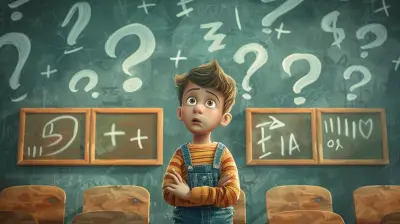21 November 2025
When was the last time you sat down after a lesson and thought about how it went? Did it flow smoothly? Were the students engaged? What could have been better? These questions are at the heart of reflection in lesson planning—a process that every great educator should embrace.
Lesson planning isn’t just about preparing materials, structuring activities, and hoping for the best. It’s about refining your teaching approach by analyzing past lessons, learning from experiences, and continuously improving. Without reflection, teaching can become repetitive, ineffective, and disconnected from student needs.
So, why is reflection such a big deal in lesson planning, and how can teachers use it to create better learning experiences? Let’s dive in! 
What Is Reflection in Lesson Planning?
Reflection in lesson planning is the practice of looking back at your teaching experiences to evaluate what worked, what didn’t, and what can be improved. It’s not just about self-criticism—it’s about growth, adaptation, and ensuring that students receive the best education possible.Think of it like fine-tuning a recipe. The first time you try it, it might be decent, but after adjusting ingredients based on feedback, you eventually perfect it. Teaching operates in much the same way—you need to try, tweak, and improve to get the best results. 
Why Reflection Matters in Lesson Planning
1. Enhances Teaching Effectiveness
When teachers reflect on their lessons, they can pinpoint gaps in understanding, ineffective teaching strategies, or areas needing improvement. Over time, this leads to more purposeful and impactful teaching.For example, if you notice students struggle with a particular concept despite your efforts, reflection helps you consider alternative methods—perhaps using visuals, interactive activities, or real-life examples.
2. Encourages Continuous Professional Growth
Great teachers are lifelong learners. Reflection fosters a growth mindset, encouraging educators to keep evolving, experimenting, and refining their approaches. By journaling insights, seeking feedback from colleagues, or attending workshops, teachers ensure they never fall into a stagnant routine.3. Boosts Student Engagement and Learning Outcomes
Students learn best when lessons are tailored to their needs. By reflecting on student reactions, participation levels, and comprehension, teachers can adjust lessons to increase engagement and effectiveness.Did students seem bored? Were they struggling with the material? Reflection helps answer these questions, allowing you to modify future lessons for better learning experiences.
4. Helps Identify Strengths and Weaknesses
Self-awareness is key to growth. Through reflection, teachers recognize their strengths and areas needing development. Maybe you're fantastic at storytelling but need to improve classroom management. Knowing this allows you to play to your strengths while actively working on weaknesses.5. Encourages Adaptive Teaching
No two classes are the same. Even if you teach the same subject every year, student needs, learning styles, and classroom dynamics change. Reflection helps teachers adapt and personalize lessons based on the unique characteristics of each group.
How to Reflect Effectively After a Lesson
Reflection is more than just thinking about a lesson—it’s a structured process that helps improve future teaching. Here are some practical ways to reflect effectively:1. Ask Yourself Key Questions
After each lesson, take a few minutes to ask yourself:- What went well? (What aspects of the lesson were successful?)
- What challenges did I face? (Were students engaged? Did they understand the material?)
- How did students respond? (Did they participate actively? Was there confusion?)
- What would I change next time? (Would different teaching methods help?)
Writing down answers helps track patterns over time and establish areas for improvement.
2. Keep a Teaching Journal
A lesson reflection journal is an excellent way to keep track of insights. It can be as simple as a notebook or a digital document where you jot down thoughts after every class. Over time, this journal becomes a valuable resource for improving your teaching techniques.3. Seek Student Feedback
Who better to tell you what worked than your students? Conduct quick surveys or have informal discussions to gather honest feedback on your teaching approach. Even a simple “What did you like/dislike about today’s lesson?” can provide valuable insights.4. Peer Observation and Collaboration
Sometimes, another perspective is incredibly helpful. Invite a colleague to observe your class and provide constructive feedback. Likewise, observe other teachers to gain new ideas and insights.5. Use Video Recording
Recording your lessons can be eye-opening. Watching yourself teach allows you to see things you might not notice in the moment, like your body language, pacing, or student reactions.6. Analyze Student Work
Reviewing students’ classwork, homework, and assessments can reveal gaps in understanding or areas where instructional methods need tweaking. If many students struggle with the same concept, it might signal the need for a different teaching approach.
Implementing Reflection in Lesson Planning
Now that we know why reflection is important, how can we incorporate it into lesson planning consistently?1. Plan With Reflection in Mind
When designing your lesson plan, build in a reflection component. This could mean allocating time at the end of each lesson for student feedback or personal reflection.2. Adapt Your Next Lessons Based on Insights
Reflection isn’t just about analyzing the past—it’s about shaping the future. Use your insights to adjust teaching methods, add new activities, or modify lesson pacing.3. Create a Reflection Template
Having a structured format for post-lesson reflection makes it easier to follow through. A simple template could include:- Lesson Topic:
- What worked well?
- What didn’t work?
- Student Engagement Level:
- Changes for next time:
4. Make Reflection a Habit
Like any good habit, consistency is key. Whether it’s five-minute reflections daily or a weekly review, set aside time to reflect regularly.Final Thoughts
Reflection in lesson planning isn’t just a box to check—it’s a game-changer. It’s the secret ingredient that separates good teaching from great teaching. By continuously evaluating and refining your approach, you can make learning more engaging, impactful, and effective for students.So, the next time you finish a lesson, take a moment. Think, analyze, learn, and grow. Because the best teachers never stop improving.


